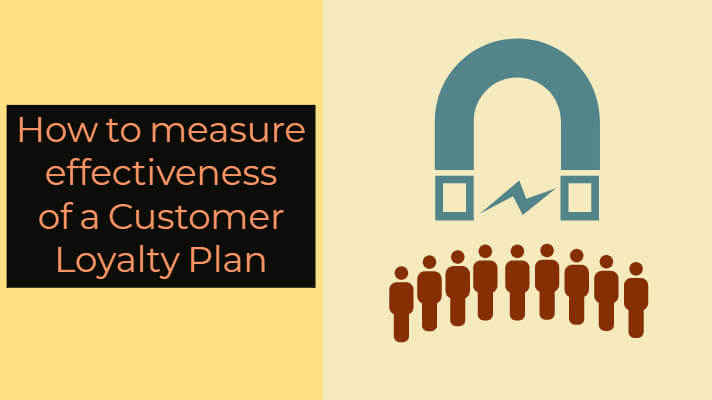
How To Measure Effectiveness of a Customer Loyalty Plan
Customer loyalty plans help to build brand advocacy through customers. It is also a great technique to boost customer retention and new customer acquisition. While there is a lot of thought and science that goes into building a loyalty plan, post its implementation, measuring its effectiveness is equally important.
In this post, we will delve into some proven techniques to measure the effectiveness of a customer loyalty program. However, if you’re new here, you should look at our earlier posts where we detailed “How to build a loyalty program” and “Types of customer loyalty programs.”
4 most popular metrics used to measure the effectiveness of a customer loyalty plan:
Customer Retention Rate
Simply put, this is a metric to indicate how long customers stay with you. The point of running a loyalty program in the first place is to the increase the number of customers who choose to remain loyal to you. So, the difference in customer retention between program members and non-program members tells you how effective your loyalty plan was. This metric works well for all types of loyalty plans.
“A 5% increase in customer retention can cause a 25-100% increase in profits” – Fred Reichheld, Author, The Loyalty Effect
Negative Churn
Churn is the rate at which customers leave your business. Hence, negative churn is the rate at which customers upgrade or purchase additional services. This is an important and highly effective metric to measure if you have a tiered loyalty system in place. Access to an analytics software is helpful to measure this metric effectively as purchases need to be attributed to individual users
Customer Effort Score
It is a metric under which a user is asked as to how much effort they had to invest to solve a particular problem with a business. It takes into account actual customer experiences and hence is one of the more humane and reliable ways to measure the effectiveness of your loyalty plan. This metric works well if your loyalty program addresses customer services issues or aims at making life easier for a customer in their purchase journey.
Net Promoter Score
This is a customer satisfaction metric taking into account feedback received from the customers. It essentially measures on a scale of 1-10, the degree to which people would recommend your business to others.
On the NPS scale, detractors – people who have had a negative experience with you, rate between 1 to 6. Passive users rate between 7-8 and are the ones who don’t really have an opinion whether they would recommend you. Those rating between 9-10 are your promoters.
Subtracting the percentage of detractors from the percentage of promoter gives the NPS score. It ranges between -100 to +100 and any positive score is good.
At Jacobsons Direct, we use NPS to gauge the customer sentiment, identify brand advocates, and measure the effectiveness of a loyalty program.
That’s all from us for now. Keep watching this space for more insights!

